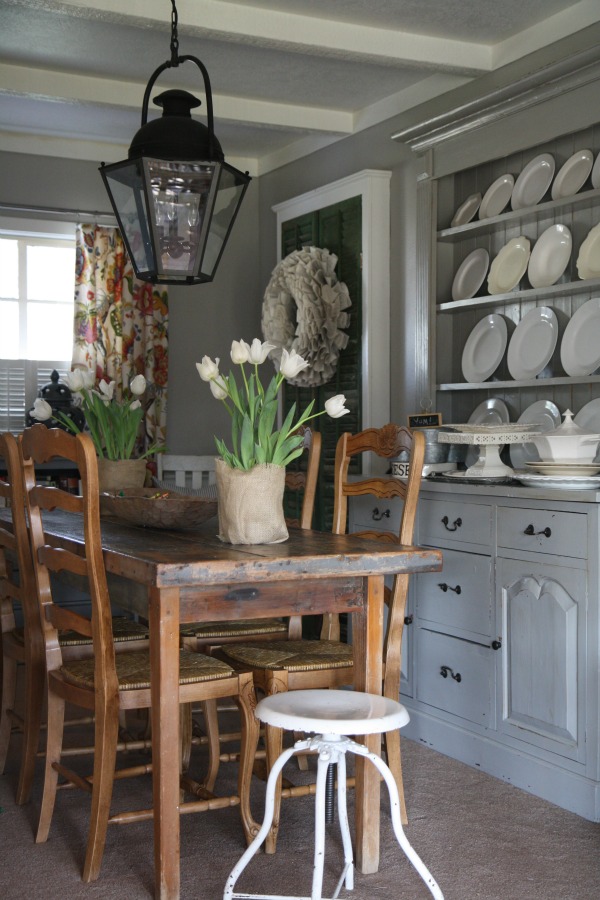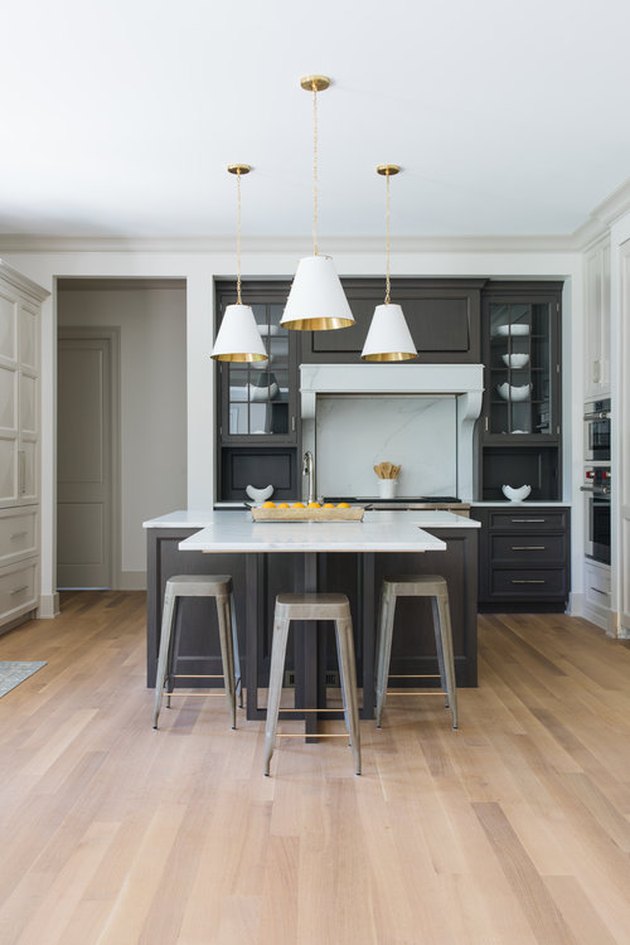Single pendant lighting for kitchens is a brilliant way to enhance both the functionality and aesthetic appeal of the space. Pendant lights serve as both a decorative and practical element, offering focused illumination while also becoming a design centerpiece. Whether placed above a kitchen island, dining nook, or sink, a single pendant light can make a significant impact on the overall ambiance. Its versatility allows it to fit into various kitchen styles, from modern minimalism to classic farmhouses or even industrial chic.
One of the primary benefits of single pendant lighting in the kitchen is its ability to provide targeted illumination. This type of lighting is perfect for task-oriented areas, such as an island where food prep, cooking, or dining often occurs. A single pendant light can deliver focused brightness to these zones, ensuring you have ample lighting to work comfortably and safely. Additionally, pendant lights can be fitted with adjustable brightness options, making them suitable for creating a softer, ambient mood when the kitchen transitions into a gathering or entertaining space.

Single pendant lights come in an array of designs, shapes, and materials, giving homeowners endless choices to match their kitchen’s decor. Glass pendants with clear or frosted finishes offer a contemporary look while maximizing light output. On the other hand, metal shades, often seen in industrial or farmhouse designs, provide more directional light and add texture to the space. There are also creative options like woven rattan, ceramic, or sculptural designs that double as works of art, adding a unique flair to the room.
The placement of single pendant lighting plays a crucial role in achieving the desired effect. For kitchen islands, the pendant should be centered to evenly distribute light across the surface. Above sinks, a pendant light should be positioned to illuminate the sink area without causing glare or shadows. The height at which the pendant is hung is also important—typically, 30-36 inches above the countertop is recommended for most applications. This height provides sufficient lighting while avoiding obstruction of the view across the kitchen.

When choosing a single pendant light, the size of the fixture should be proportional to the space it occupies. Oversized pendants can overwhelm small kitchens, while tiny lights might get lost in a large, open-concept layout. A good rule of thumb is to measure the width of the surface being lit and choose a pendant that is about one-third of that size. This ensures the light fits harmoniously within the room without looking out of place.
The type of bulb and its wattage significantly impact the functionality of single pendant lighting. LED bulbs are a popular choice due to their energy efficiency, long lifespan, and versatility in color temperatures. Warm white bulbs create a cozy and inviting atmosphere, ideal for dining areas, while cool white bulbs are better suited for task lighting, offering crisp and clear illumination. Dimmable options allow you to control the intensity of the light, adapting it to various times of the day or different activities.

Installing a single pendant light is a relatively straightforward process, but it’s essential to consider electrical wiring and support structures. Depending on the design of the pendant and the type of ceiling, installation might require a junction box or additional ceiling reinforcement to ensure safety. If you’re not comfortable with electrical work, hiring a professional electrician is the best course of action to avoid mistakes and ensure compliance with local codes.
The versatility of single pendant lights extends to the choice of finishes and colors available. Brushed nickel, matte black, brass, or white finishes are among the most common, each lending a distinct character to the kitchen. For example, brass or gold finishes add a touch of warmth and luxury, while matte black offers a bold, modern contrast. Choosing a finish that complements the kitchen’s fixtures, such as cabinet hardware or faucets, creates a cohesive and polished look.
Single pendant lighting can also be a cost-effective solution for kitchens that need an upgrade without a full remodel. Replacing an outdated or inadequate fixture with a stylish pendant can instantly elevate the room’s overall aesthetic. Since pendants are typically smaller fixtures, they are often more affordable compared to chandeliers or recessed lighting installations, making them an accessible option for many homeowners.

Energy efficiency is another advantage of single pendant lighting, especially when paired with LED bulbs. These bulbs consume significantly less energy than traditional incandescent options, helping reduce electricity bills while being eco-friendly. Some pendant lights even come with integrated LEDs, eliminating the need for bulb replacements and ensuring optimal performance throughout their lifespan.
For kitchens with high ceilings, a single pendant light can draw the eye upward, creating a sense of height and grandeur. Adjustable cords or chains allow you to customize the hanging height, accommodating various ceiling heights and personal preferences. In open-concept layouts, single pendants can help define the kitchen area by drawing visual attention to a specific zone, such as the island, without the need for additional architectural elements.
In smaller kitchens, a single pendant light provides an opportunity to make a big design statement without overwhelming the space. Compact yet striking designs, like geometric or vintage-inspired pendants, can add personality and charm while offering sufficient illumination for daily tasks. Pairing the pendant light with under-cabinet lighting further enhances functionality without overcrowding the space.

The choice of material in pendant lighting can influence the atmosphere of the kitchen. Glass pendants, for example, reflect and refract light, making them ideal for brightening up a room. Metal pendants, especially in darker finishes, create a more focused beam of light, perfect for task lighting. Natural materials like wood or rattan bring a warm, organic feel to the space, complementing rustic or bohemian styles. Each material lends its character, allowing you to tailor the fixture to your design vision.
Beyond aesthetics and functionality, single pendant lighting contributes to the overall safety and usability of the kitchen. Adequate lighting reduces the risk of accidents during food preparation or cleanup, particularly in areas with sharp utensils or hot surfaces. Additionally, the focused light from a pendant helps highlight specific zones, improving visibility and ensuring precision in tasks like chopping, measuring, or plating food.
Single pendant lighting is a versatile and stylish choice for any kitchen, offering a blend of function and form. It enhances task lighting, adds a decorative focal point, and creates a cohesive design that complements various styles. By carefully considering size, placement, materials, and bulb type, you can choose a pendant light that elevates your kitchen’s functionality and aesthetic appeal.
Common Mistakes to Avoid
One common mistake is hanging the pendant light too high or too low. If the light is too high, it may not provide adequate illumination for tasks. If it’s too low, it can obstruct the view or become a safety hazard. Proper height placement, generally 30-36 inches above a countertop, is crucial for effective lighting.
Another error is choosing a pendant that is either too large or too small for the space. A pendant that overwhelms the kitchen or appears undersized against a large island can throw off the balance of the design. Always measure the space and follow sizing guidelines to achieve the right proportions.
Failing to consider the kitchen’s overall style is another mistake. A modern pendant in a rustic kitchen or a vintage design in a contemporary space can create visual dissonance. Ensure the pendant complements the existing decor and finishes for a harmonious look.
Many people overlook the importance of lighting temperature and brightness. Using a bulb that is too dim can make tasks difficult, while overly bright light can create an uncomfortable glare. Opt for adjustable or dimmable bulbs to provide flexibility for different activities.
Neglecting energy efficiency is also a mistake. Choosing incandescent bulbs over LEDs can result in higher electricity bills and more frequent replacements. LEDs offer a long-lasting and cost-effective solution without compromising on light quality.
Last, some homeowners skip professional installation when it’s necessary. Improper wiring or support can lead to electrical issues or damage to the fixture. Hiring a qualified electrician ensures the pendant light is safely and correctly installed.

What are the benefits of using single pendant lighting in a kitchen?
Single pendant lights offer focused illumination, making them ideal for task lighting above kitchen islands, sinks, or dining areas. They also serve as decorative focal points, enhancing the kitchen’s design. Pendant lights are versatile, energy-efficient, and available in various styles to complement different kitchen aesthetics.
How do I choose the right size for a single pendant light?
The size of a pendant light should be proportional to the space it occupies. A good rule is to choose a fixture that is about one-third the width of the surface it lights. For example, a 36-inch-wide island would pair well with a pendant around 12 inches in diameter. This ensures the light is neither overpowering nor too subtle.
Where should I place a single pendant light in the kitchen?
Placement depends on the purpose of the light. Above an island, the pendant should be centered and hung 30-36 inches above the countertop. For sinks, it should be positioned directly above the basin for optimal lighting. Always ensure the light doesn’t obstruct views or create shadows.

What type of bulbs are best for pendant lighting?
LED bulbs are the best choice for pendant lighting due to their energy efficiency, long lifespan, and versatility in color temperatures. Warm white LEDs create a cozy atmosphere, while cool white options are better for task lighting. Dimmable LEDs offer flexibility for different activities.
Can a single pendant light work in a small kitchen?
Yes, a single pendant light is perfect for small kitchens, providing sufficient lighting without overcrowding the space. Compact designs with bright finishes can make the room feel larger, while wall-mounted or under-cabinet lights can supplement the pendant for added functionality.
How do I maintain a pendant light in the kitchen?
Maintenance involves regular dusting and cleaning with a damp cloth. For glass fixtures, use a gentle glass cleaner to prevent smudges. Periodically check the wiring and mounting to ensure safety. If the fixture has intricate designs or finishes, follow the manufacturer’s care instructions to preserve its appearance.

T-Shaped Kitchen Island Ideas and Inspiration Hunker

Related Posts:
- Kitchen Lights Over Island Pendant
- French Country Kitchen Lighting Ideas
- 4 Foot Led Kitchen Light
- Best Lighting Over Kitchen Island
- Clear Glass Kitchen Lighting
- Light Yellow Paint For Kitchen
- Recessed Fluorescent Kitchen Lighting Fixtures
- Adjustable Kitchen Island Lighting
- Recessed Can Lights In Kitchen
- Battery Lights For Kitchen Cabinets
